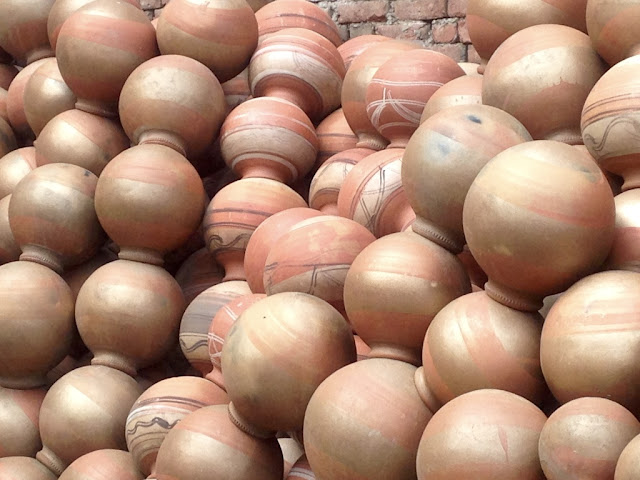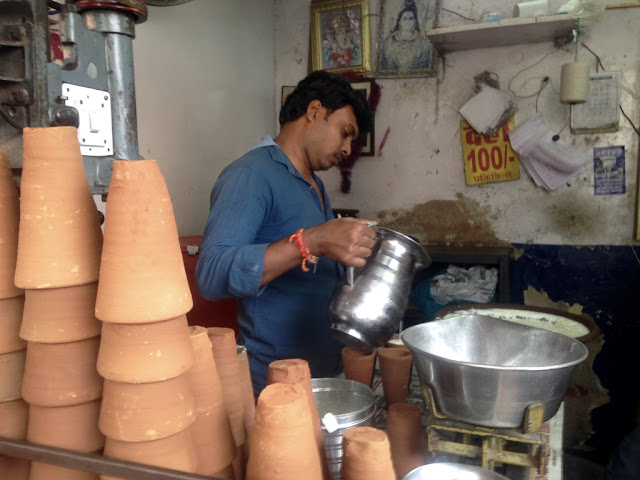Pottery vessels have been made and used in India for millennia.
 |
Large earthenware jugs displayed and sold on the street.
  |
And are still commonly used in households today,
 |
| A clay earthenware water container on a family's kitchen counter. |
as well as in local eateries.
 |
Lassi, freshly made local yogurt, served in earthenware cups.
|
 |
| Unglazed and unpainted earthenware ceramic cups for chai, sweetened and spiced milk tea. |
 |
| The porous, low-fired, clay cups suffuse the chai with an earthy taste. |
In addition to everyday functional objects, clay has been historically used throughout India for various artistic and religious forms.
 |
Extra large terracotta horses are made by extended families,
generally for deities who sit on the horse and protect the village.
|
India's pottery has been influenced by many other cultures. Its Blue Pottery technique, using quartz powder, has origins in Iran. In the latter part of the 20th century, the city of Jaipur revitalized its Blue Pottery tradition.
 |
| Brilliant hand-painted pieces of Jaipur's Blue Pottery. |
 |
Minerals are hand-ground to create the vibrant colorants painted on the ceramics.
 |
Designs are individually hand-painted without use of any stencils.
I was so fortunate that potters and artists welcomed me into their homes and studios.
Jaipur potter and painter, Meenu Srivastava, shows me her skilled stoneware work.
The potters in the lush Andretta Valley demonstrated their techniques.
 |
In the rainy season, clay dries ever so slowly. To speed up the process,
these potters throw their clay onto the concrete wall to absorb the moisture. |
Ceramic art can be found more and more in the country's galleries.
Ceramic creations captivated me, including the teapots below.
Some art traditions are passed down through generations.
 |
Bikaner painter in the miniature tradition, Mahaveer Swami,
practices the miniature painting style of his father, and grandfather. |
 |
| Jaipur painter Vinay Sharma in his studio. |
 |
| His large home and studio house an impressive, unique display of antiques. |
 |
| His recent project with local artists painting bicycles. |
I was lucky to attend the first ever International Ceramics Triennial, proving that while clay is a material as old as civilization, it has become a recognized means of creative exploration among contemporary Indian artists.
 |
| One of the clay installations showcased at the triennial. |




















































































